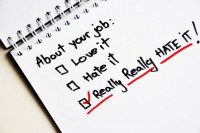Software and Human Connection in the Recruitment Process

Over the past 10 years recruitment has changed dramatically. The introduction of the internet has opened the doors for recruiters to recruit via websites, job boards and social media. In the past 3 years there has been a growth in the usage of recruitment software to help companies save both money and time in the overall process.
The software is able to predict the perfect candidate for the employer via a series of keyword entries that are featured in the applicants resume. Employers firstly fill in their job requirements and the software does the rest. By sorting through the applicants and matching the keywords in their resumes.
This is where the issue arises. Can software actually find the perfect candidate when there is no human interaction?
Around half of a person’s communication in a interview is through body language. How is it possible that recruitment software can be trusted in finding the right candidate? Especially when the most integral part of of the recruitment process is human connection and interaction.
Visual cues from a candidate can speak volumes about their enthusiasm, their work ethic, their honesty, their confidence -the list goes on. Here are some examples of what recruiters can see that software cannot.
Posture shows your confidence and also your acceptance in engaging the interviewer. A great deal of candidates come in to an interview feeling flat, they slouch over, there shoulders are not pushed back. All of these things instantly show the interviewer that they don’t really want to be there. Someone who is confident in themselves will show their confidence in their posture, which the interviewer will pick up on.

A person's smile says a lot about who they are. When a person is genuinely smiling, there whole face smiles. An interviewer can see if a candidate is showing real enthusiasm through their eyes. If the corner of their eyes crease while smiling, this is a sign of being genuine. A lot of recruiters use this as a measurement for whether or not the candidate will fit into workplace culture. if they are genuinely showing their interest, they will be right for the role.
Subtle movements such as the scratching of the nose can tell a great deal about the honesty in an answer. An interviewer can easily spot dishonesty in an answer, if there is a slight change in a candidate's behaviour.

Paralanguage is the focus on tone, speed and pitch of the voice rather than the words spoken. You can read a lot from these changes. If their is a change in pace of the applicants voice and it becomes faster, this generally means that the candidate is nervous, which can mean dishonesty or discomfort in the answer. Generally if a person is nervous it will show as soon as they enter the room.
Your arms being crossed throughout an interview, says a lot about whether you are interested in the role. It can be seen that you are uncomfortable and also disinterested in the interview. The crossing of the arms can also come across standoffish, which isn't a selling point of your personality to potential employers.

Overall what it comes down to in finding the right candidate is, experience and being able to read whether the candidate will be the right fit for the company. Technology is slowly changing this process, but what it still isn't able to do is, have the human connection.






